German walking tour No. 2 - German architectural gems in St. Petersburg
Our second walking tour round sights and monuments related to Germans and Germany in St. Petersburg begins a few steps from Palace Square on Millionaya Ulitsa, which in the 19th century was known as Bolshaya Nemetskaya Ulitsa ("Grand German Street") due to the number of German immigrants who had settled here during the previous century. One of the most impressive buildings on the street is the Stackenschneider House at No. 10, home of the architect Andrey Stackenschneider, the designer of several impressive palaces in St. Petersburg, whose grandfather was a tanner from Braunschweig who came to Russia in the reign of Peter the Great.
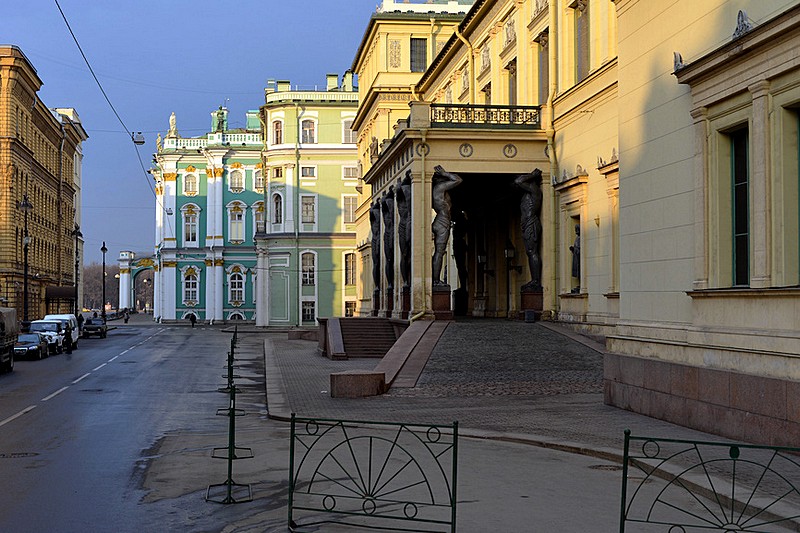
As we follow the street along to Palace Square, we pass the Small and Grand Hermitages, both of which were partly designed by the architect Yury Felten (or Georg Friedrich Veldten), whose father Matthias Veldten was an economist at the Academy of Sciences, and who returned to the land of his forebears to study architecture at Tubingen University. Another relative, Johann Veldten, had been Ober-Kuchenmeister (Master of the Kitchen) to Peter the Great and lived nearby at No. 10, Palace Embankment (Dvortsovaya Naberezhnaya). The Hermitage collections include a huge number of works by German artists and, perhaps more significantly, the products of German craftsmen, including armorers, minters and glass-blowers.
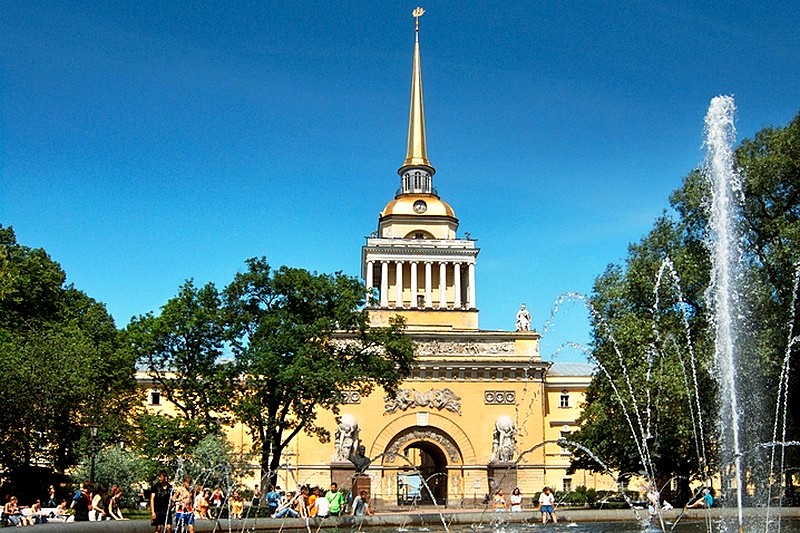
Crossing Palace Square diagonally, we come to the end of Nevsky Prospekt. Opposite is the Admiralty Garden, which was laid out by Eduard August von Regel, Director of the Imperial Botanical Gardens in the late 19th century and a distinguished botanist from Gotha who named over 3000 new plant species from the farther reaches of the Russian Empire. Many Germans worked in the Admiralty itself during the two centuries of Tsarist rule in St. Petersburg, from simple navigators to Ministers of Naval Affairs. Among the most famous were Martin Gossler, Johann von Krusenstern, Friedrich Benjamin von Lutke, and Ferdinand Friedrich Georg Ludwig von Wrangel.
We walk past the Admiralty Garden along Admiralteyskiy Prospekt and turn right on Prospekt Dekabristov, then left along Konnogvardeyskiy Bulvar, at the end of which on Ploshchad Truda we can see one of Andrey Stackenschneider's masterpieces, the Nikolaevskiy Palace, built for the son of Nicholas I, Grand Prince Nikolay Nikolaevich, whose wife Alexandra Petrovna, although born in Russia, was a daughter of the German Ducal House of Oldenburg.
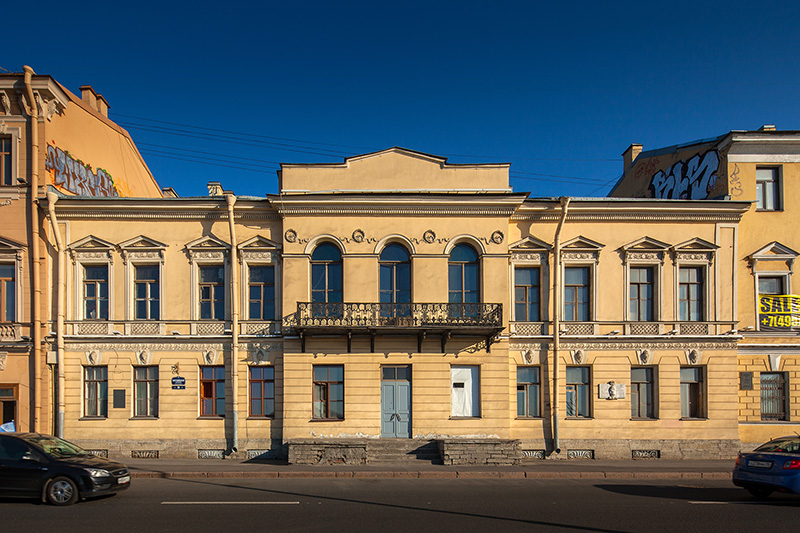
We walk past the palace and turn left onto the English Embankment (Angliyskaya Naberezhnaya) to take a look at No. 50, the former building of the Prussian Embassy, where Otto von Bismarck was ambassador from 1859 to 1862. Sidelined from German politics by the Regent of Prussia (the future Willliam I), Bismarck during his time in St. Petersburg learned Russian, hunted for bear (on one expedition he nearly lost a leg to frostbite), and first met his great adversary Prince Alexander Gorchakov, who would become Chancellor of Russia in 1863. A marble plaque on the building commemorates Bismarck's residency.
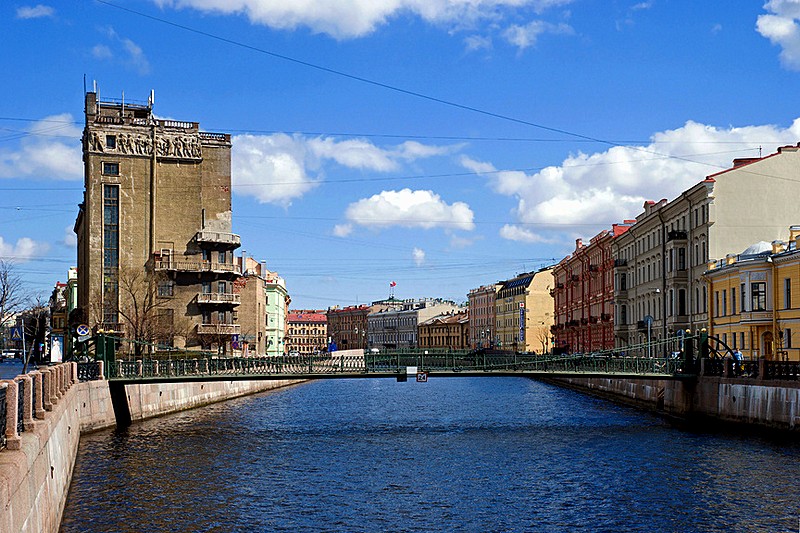
Further along the embankment, at No. 68, is the former mansion of financier and philanthropist baron Alexander von Stieglitz, first governor of the State Bank of Russia and son of Ludwig von Stieglitz, a Jewish banker from Arolsen in Germany who was known as "the Russian Rothschild". After Stieglitz's death, the mansion was bought for Grand Prince Pavel Alexandrovich, son of Alexander II, and rebuilt by Maximilian Messmacher, son of a German carriage maker.
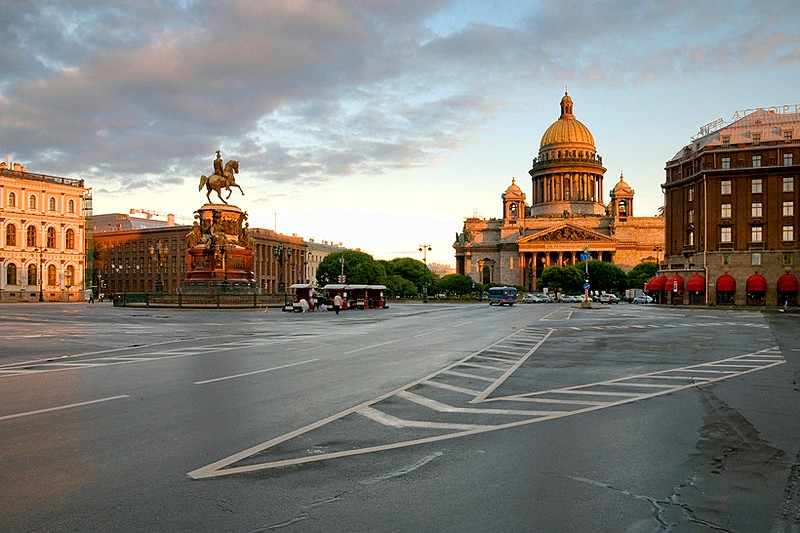
We then return to Ploshchad Truda, walk across the square and along Ulitsa Truda until we reach the Moyka River and Bolshaya Morskaya Ulitsa. Turning left along the river, we see the impressive if dilapidated constructivist Communication Workers' House of Culture, one of the most striking Soviet buildings in central St. Petersburg, built on the foundations of the German Reformed Church, which stood on the site from 1862 to 1929. Right next to the House of Culture, the elegant Pochtamtsky Bridge is a pedestrian suspension bridge, one of several bridges in St. Petersburg designed by the engineer Wilhelm von Traitteur, a native of Mannheim who worked for over 15 years in St. Petersburg (1816-1831).
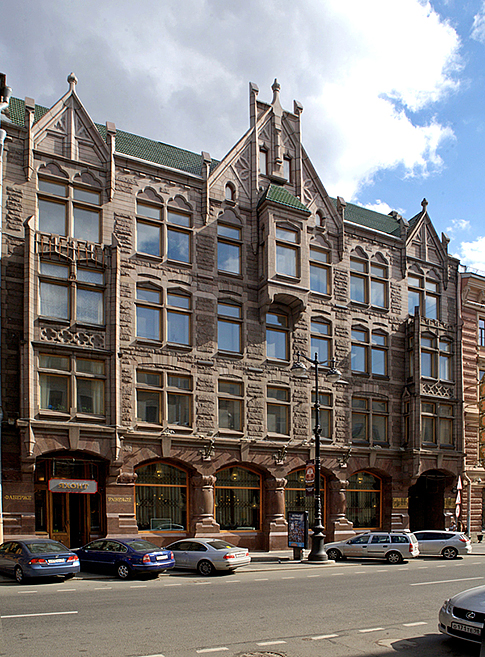
Following Bolshaya Morskaya Ulitsa away from the Moyka River, we soon come to St. Isaac's Square (Isaakievskaya Ploshchad). Opposite the Cathedral to your right is another of Stackenschneider's monumental imperial palaces, the Mariinskiy Palace, built for another of the children of Nicholas I, Grand Princess Maria Nikolaevna, whose husband was Maximilian de Beauharnais, 3rd Duke of Leuchtenberg and grandson of Maximilian I of Bavaria. In the middle of the square stands an equestrian statue of Nicholas I sculpted by the great sculptor Peter Clodt von Jurgensburg, who came from a family of Baltic Germans, with bas-reliefs by another German, Robert Zaleman. At 41, Bolshaya Morskaya Ulitsa, on the corner as we come to the square, is the austere neoclassical building of the former German Embassy, built by the renowned industrial designer Peter Behrens in 1913. One of the few buildings in central St. Petersburg built by a foreign architect whose career was made outside Russia (and one of Behrens' few works outside Germany), it caused a scandal when it was unveiled due to its "Teutonic" brutality, but was in fact a prototype for the monumental classicism that dominated Soviet architecture in the mid-20th century. Sacked at the outbreak of the First World War, it lost the muscular Dioscuri statues on its pediment, but remained the German consulate until 1941.
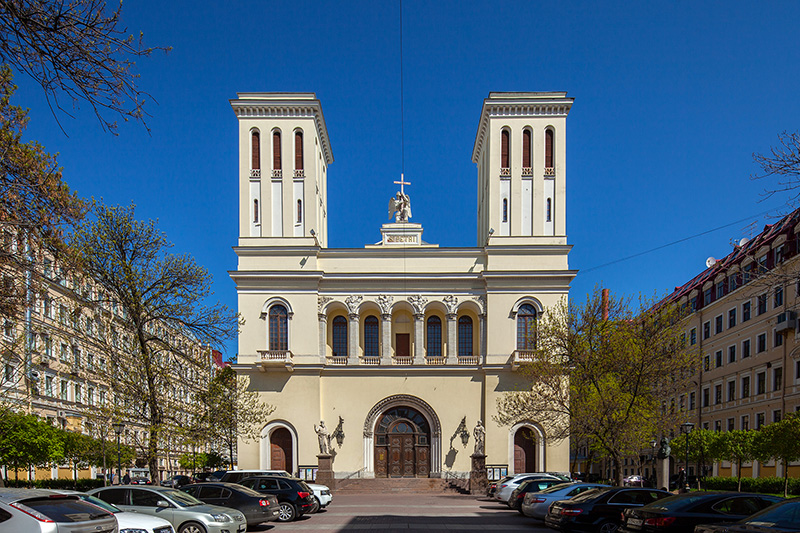
As we cross St. Isaac's Square, it is worth noting the Astoria Hotel, constructed 1908-1912 by the German engineering company Wayss & Freytag. Continuing along Bolshaya Morskaya towards Nevsky Prospekt, we pass the former building of the Imperial Society for the Encouragement of the Arts at No. 38, built by Messmacher and reconstructed by Hieronymus Kitner, another architect of German origin, famous for his work in Russian "brick style", who began his career as Stackenschneider's assistant. Yet another prominent late 19th century architect of German origin, Viktor Schroeter, built No. 32 for the Russian Export Trade Bank 1871-1888. Meanwhile, Karl Schmidt, the son of a German engineer, built the Art Nouveau building at No. 24 for Carl Faberge, the renowned jeweller to the Imperial Court, whose father was of mixed Huguenot and Baltic German origin.
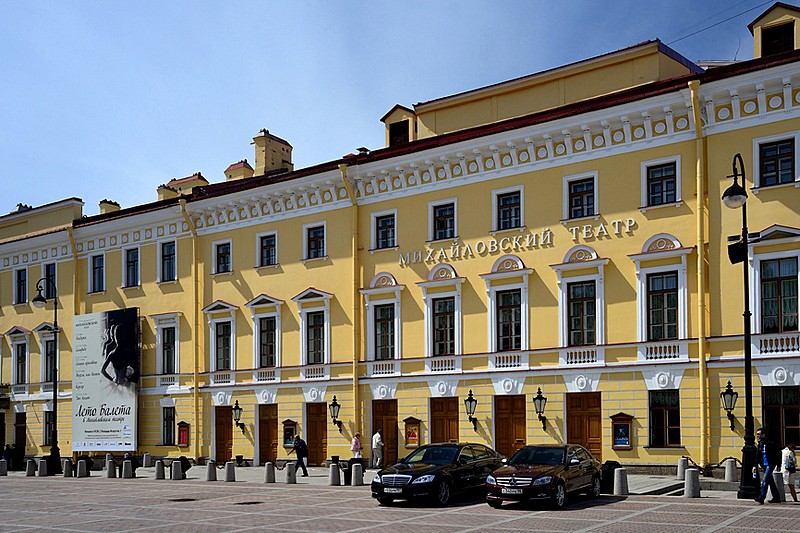
Coming onto Nevsky Prospekt, we turn right. Along St. Petersburg's main street there were once any number of luxury shops, banks, and cultural institutions with German links. At 22-24 stands the magnificent Lutheran Church of St. Peter ("Petrikirche"), along with its school, the renowned Petrischule, where the majority of St. Petersburg's prominent German inhabitants educated their children, including many of the architects and others mentioned here. The current building was erected two centuries after the founding of the school by architect Martin Hoffmann. In the courtyard of the church there is also a bust of Johann Wolfgang Goethe, unveiled in 1999 to mark two centuries since the great poet's birth.
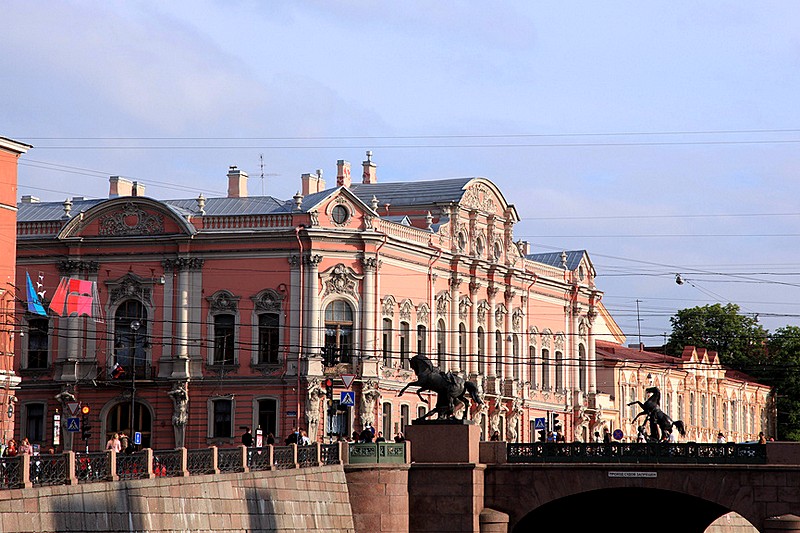
Walking about five minutes' along Nevsky brings us to No. 44, the Armenian Apostolic Church of St. Catherine, designed by Yury Felten. At No. 58 is the building of the former International Commercial Bank, where Adolf Rothstein, a German Jewish financier who became one of the wealthiest and most powerful men in the Russian Empire at the end of the 19th century, was for many years the director.
As we come to the Fontanka River, we cross Anichkov Bridge, with its famous set of states, The Horse Tamers by Peter Clodt von Jurgensburg, arguably the sculptor's most celebrated works. On the far side of the bridge is the stunning Beloselsky-Belozersky Palace, a neo-baroque confection concocted by Andrey Stackenschneider. A further ten-minute walk brings us to Ploshchad Vosstaniya and Moscow Railway Station, the building of which was designed by Konstantin Thon, the architect most famous for the Cathedral of Christ the Saviour in Moscow, whose father was a German jeweller in St. Petersburg.
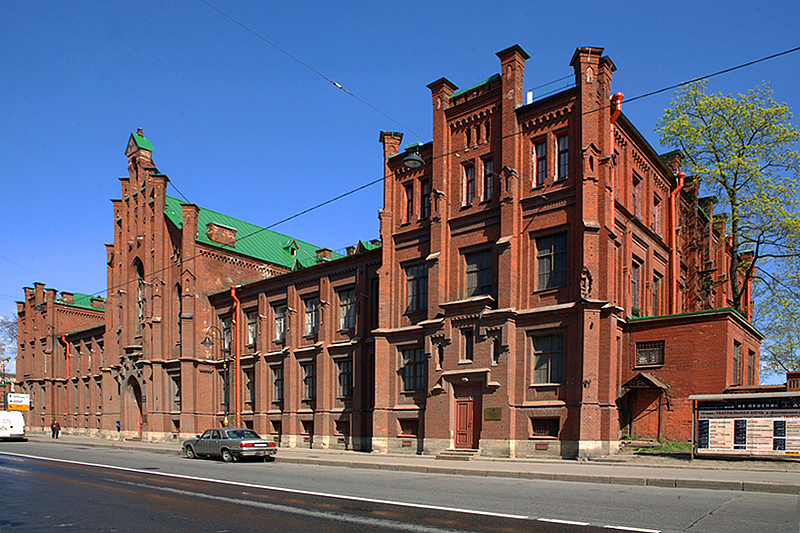
We turn left here up Ligovsky Prospekt to see the Rauchfuss Children's Hospital, named after the prominent pediatrician Karl Rauchfuss, who was director there from the hospital's opening in 1869 until his death in 1915. He was responsible for many innovations, including the quarantining of infected children, and published widely, mostly in German. A little further along the street at No. 4 is the lowering red-brick building of the Evangelical Women's Hospital, founded by another German doctor, Carl Meyer, and built by a Baltic German architect, Rudolf Bernhardt.
From Ligovsky Prospekt, we turn left onto Ulitsa Nekrasova, walk to the end of the street and turn right then left across Liteyny Prospekt onto Ulitsa Pestelya. A short walk down the street brings us to the junction with Solyanoy Pereulok, home to the Baron Stieglitz State Art and Industrial Academy. Alexander Ludvig Stieglitz gave around seven million rubles in 1884 to found this elite school of industrial design, and it has remained through several changes of name St. Petersburg's most prestigious art school. The beautiful building of the Academy's Museum of Applied Arts, on the corner of Ulitsa Pestelya, with its distinctive glass roof, was the work of Maximilian Messmacher.
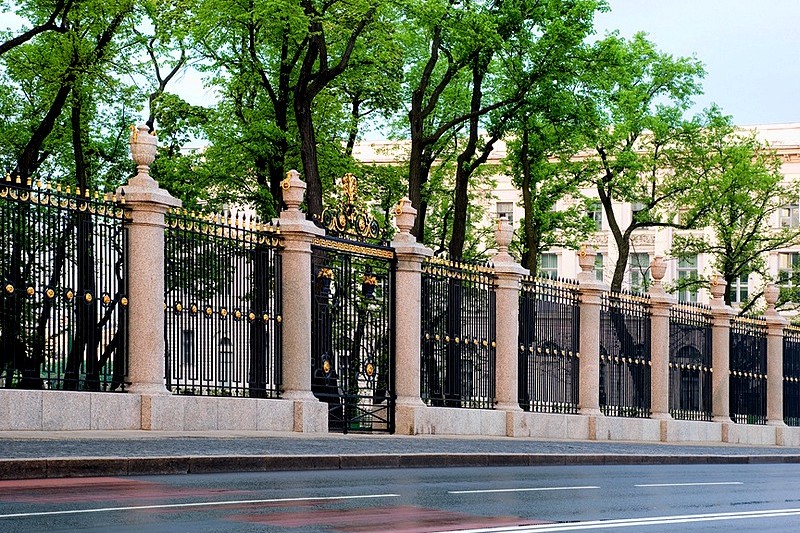
From there it is a short walk across the Fontanka River to the Summer Garden, two of the most striking features of which are the ornate wrought-iron fence designed by Yury Felten, and the exquisitely decorated Monument to Ivan Krylov, another superb public sculpture by Peter Clodt von Jurgensburg. Here, in one of St. Petersburg's most picturesque spots, we end our German tour.

